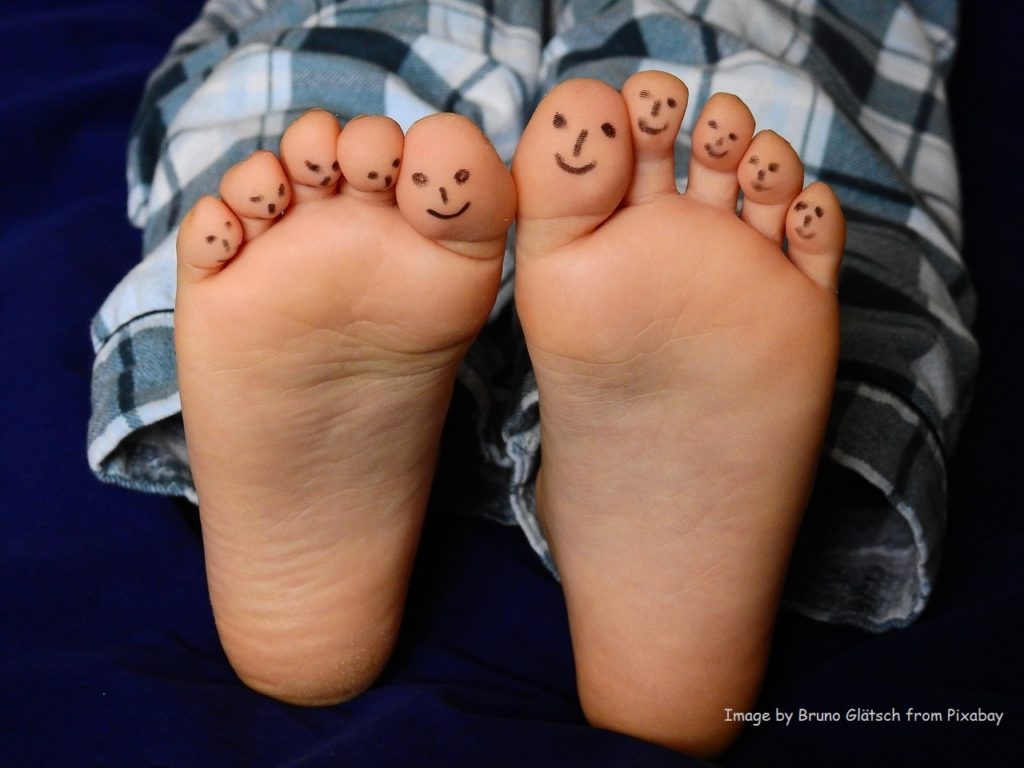 Well it finally happened. The day all mothers with daughters regard with mixed feelings. No, I’m not talking about my daughter’s first period. Today I discovered that my oldest daughter’s foot size is the same as mine.
Well it finally happened. The day all mothers with daughters regard with mixed feelings. No, I’m not talking about my daughter’s first period. Today I discovered that my oldest daughter’s foot size is the same as mine.
I took it as a sign. Time to blog a little about shoes and feet.
First shoes: Shoes are to prevent injury to feet. While indoors, let your infant stand and walk without shoes. Bare feet are best. Your baby will learn to balance better when he or she can feel the floor directly under her feet. However, for protection, shoes are needed. Start with a sturdy sneaker. No need for the clunky white leather shoes of the past. Also, avoid sandals, toddlers are more liable to trip and there is not much protection against stinging insects.
For school: The average length of recess per day is about 30 minutes. Therefore, pick comfy shoes which allow your children to utilize this time for physical activity.
Athlete’s foot: Caused by a fungus, athlete’s foot appears as wet, moist, itchy areas usually between the toes. The fungus loves moist areas and can be treated with over the counter antifungal creams or powders such as clotrimazole (Lotrimin AF), and tolnaftate (Tinactin). While common in teens, athlete’s foot is much less common in general than foot eczema. Vinegar soaks are helpful- put half a cup of vinegar into a small basin of warm water and have your child soak for 10 minutes daily.
If your child has eczema on other areas of his or her body, be more suspicious of eczema than athlete’s foot. Both can look alike, but be careful, the steroid creams used for eczema may worsen athlete’s foot.
Flat feet: Most children with flat feet have flexible flat feet which do not require any intervention. Nearly all toddlers have flexible flat feet. A child with flexible flat feet will not have an arch upon standing. However, the arch should reappear when the child’s feet are relaxed in a sitting position off the floor. Any pain in the arch or suspicion of an inflexible flat foot should be brought to a physician’s attention.
Ingrown toe nails: Ingrown toe nails occur when the sides of the nails grown into the skin. After enough irritation, bacteria can settle in and pus pockets form. To prevent ingrown toe nails from becoming infected, at the first sign of redness, soak feet in warm water with Epsom salts. Gently pull the skin back from the area of the nail which is in grown. Attempt to cut off any area of the nail which is pushing into the skin.
Clipping newborn toe (and finger) nails: A newborn’s nails have not separated enough from the nail bed to easily get a nail clipper under a nail. For the first few weeks, stick to filing the nails down. Parental guilt warning: at some point almost every parent mistakenly cuts their child’s skin instead of their nail.
Naline Lai, MD and Julie Kardos, MD
©2009 Two Peds in a Pod®



